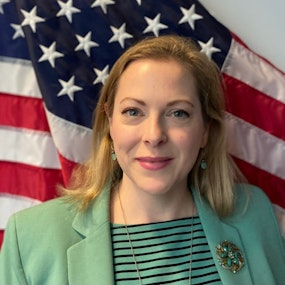ROBERT JOHNSON:
This is the award-winning Public Health Review Morning Edition for Thursday, March 14, 2024. I'm Robert Johnson. Now, today's news from the Association of State and Territorial Health Officials.
MICHELLE MELLO:
My colleagues at Temple University and I came away with the general sense that during COVID-19, we learned that our legal infrastructure was in some respects too limited, certainly very fragmented.
JOHNSON:
Public health leaders still breaking down the pandemic, looking to learn from success and failure during the years-long crisis. Stanford Law and Health Policy professor Dr. Michelle Mello teamed with colleagues at Temple University to study the legislative response to legal authority.
MELLO:
So, it really surfaced these two different problems with the legal infrastructure, too heavy in some respects, too light in other respects.
ROBERT JOHNSON:
The paper can be found in the British Medical Journal. Mello says the team identified several underlying problems.
MELLO:
One problem certainly was that, you know, nothing legally requires officials to take any particular action to respond to health emergencies, so there aren't any protections that would ensure people get the protection they need in terms of emergency response. A second problem was that the federal government took a long time to mount a robust response.
JOHNSON:
The third is that state emergency powers are largely designed to manage short-term events, not a crisis that runs for years, as did the pandemic.
MELLO:
The interesting question is how to, sort of, re-balance between individual rights and public health powers. Knowing what we know now, that emergencies aren't always short-term, and we cannot predict what they're going to look like or what we might need.
JOHNSON:
We'll have more on that next week. In the meantime, you can review the paper in the British Medical Journal by clicking the link in the show notes.
If a federal agency has the legal authority to pay for transportation services, you can probably find it in the Federal Fund Braiding Guide. Danielle Nelson is with the Federal Transit Administration. She says the guide responds to concerns discovered when planners met with local agencies.
DANIELLE NELSON:
The number one barrier reported was that they don't know what programs can fund transportation. They have a huge need. But how do they fund the programs?
JOHNSON:
Nelson says they also discovered that federal money wasn't always a solution.
NELSON:
One of the other biggest barriers was most of these programs we have heard of require a local match. And we just don't have that funding.
JOHNSON:
The Federal Fund Braiding Guide was developed out of those listening sessions, bringing together the information needed to make better use of money provided by dozens of federal programs.
NELSON:
And so the guide maps out for those 61 programs when and how you can do federal fund braiding. And when it is explicitly allowed, we have cited the statute.
JOHNSON:
Learn more about the guide in a new episode of the Public Health Review Podcast coming soon everywhere you stream audio.
Also today, tune in this afternoon for a primer on disease forecasting headlined by ASTHO past- president and Alaska Chief Medical Officer Dr. Anne Zink. O'Keyla Cooper has more.
O'KEYLA COOPER:
Join us for part one of the Disease Forecasting Learning Series today, March 14 at 4 p.m. ET. Explore the impact of disease forecasting on public health decision-making and discover workforce challenges, communication strategies, and opportunities in the field. Register now by clicking the link in the show notes.
JOHNSON:
Finally this morning, ASTHO released on Tuesday a review of President Joe Biden's proposed budget for the new fiscal year. It was sent to those who've signed up to receive Legislative Alert emails. You don't want to miss another update. Get your email on the list right now using the link in the show notes.
Before we go, a reminder also to follow this newscast on your podcast player and connect with ASTHO on social media. We're on LinkedIn, Twitter, and Facebook.
That'll do it for today. We're back tomorrow morning with more ASTHO news and information. I'm Robert Johnson. You're listening to the award-winning Public Health Review Morning Edition. Have a great day.






